If you are a civil engineer or involved in road construction, you must know that good drainage is the backbone of road durability. However, it can be challenging for you to design a suitable drainage system to balance soil conditions and water flow.
Today, you will explore all the popular types of road drainage and their design principles. We will also tell you why every successful highway project depends on them.
Types of Drainage Systems or Methods of Highway Drainage
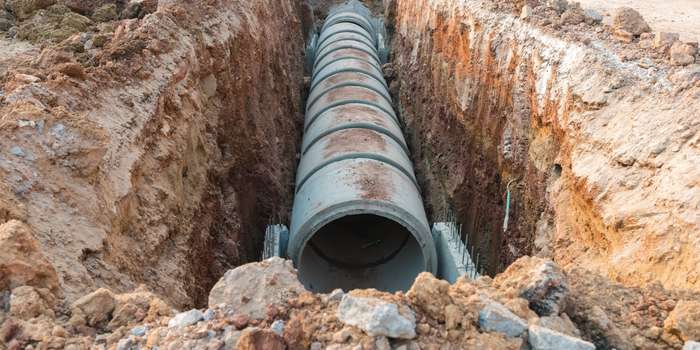
1. Surface Drainage
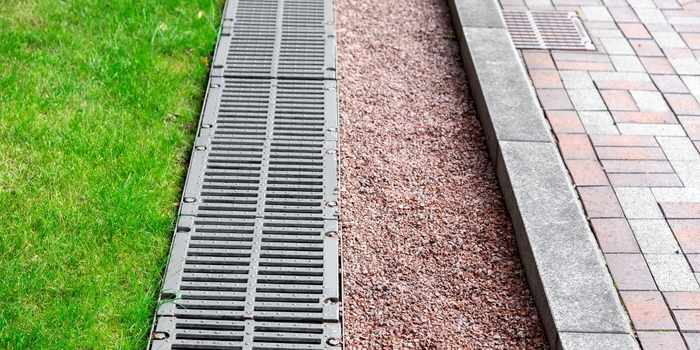
- Closed Drains
Closed drains are underground pathways that remove excess water from the surface and drain it away. They are not visible like open drains and you can use different materials to make closed drains, including concrete, PVC and clay pipes.
Water can enter these closed drains through inlets, catch basins and other channels that are made on the road surface to channelize the water to these drains. Stormwater pipes, kerb drainage systems and gully systems in big roads are examples of closed drains.
- Ditches/Open Drains
Open drains are usually built on the sides of the road to drain away the excessive water from the surface. You can build them in a V-shaped, rectangular or trapezoidal shape. These open ditches are unlined in the rural areas, but in urban areas, you can use stone, grass or concrete to prevent erosion.
Open drains are cost-effective, recharge soil water and provide simple solutions to remove surface water. However, in urban areas, the extra land is a problem for building such open drains.
- Side Drains
Side drains are often mixed with the open drain; however, side drains can be open or closed channels built on the edge of the roads to collect extra water and put it in the main pipes or drain it away.
The side drains run parallel with the roads and can be covered. Side drains are popular on roads where snowfall is common, so they can remove the excessive water in minutes. Usually, they direct water into catch basins or put the water in stormwater pipes to drain it out.
- Catch Basins
Catch basins are a surface water removal structure that is installed on roads, parking lots and other important places to collect rainwater and channel it to the underground pipes. Normally, catch basins consist of a grated inlet that collects the water from the surface and then comes an underground basin that stores water temporarily.
In the last, a pipe that connects the basin to the underground drains. Catch basins effectively collect debris, leaves and water and pass water only to the pipes, preventing blockage.
- Inlets
Inlets are the small openings installed on the surface to collect the extra water and direct that water into the storm drains or whatever channel you want. Inlets are of 2 main types, grated inlets and curb inlets.
These inlets are smaller in size compared to the catch basins, so they can not remove debris from the water. They are installed on the lower side, so water can enter these inlets easily and drain directly into the storm pipes or underground drains.
2. Subsurface Drainage
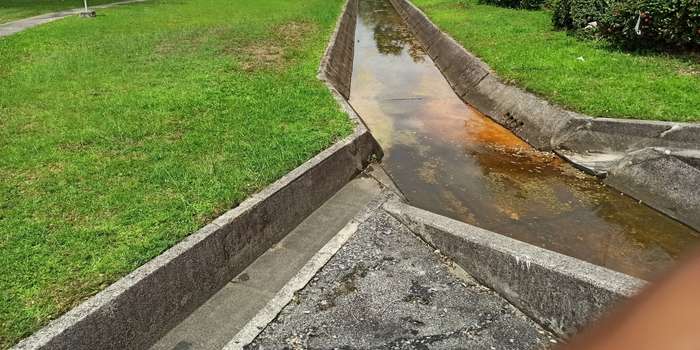
- Subgrade Drain
As the name suggests, these types of drains are used to protect the subgrade layer, which is beneath the road surface. Subgrade drains collect the absorbed water from the subgrade layer and remove it through their perforated pipes or gravel-filled trenches.
When the excessive water accumulates on the roads, it absorbs into the soil and seeps into the subgrade layer, causing weakening of the structure. This subgrade drain system prevents the water from seeping into the subgrade layer and removes the extra water into the main drains.
- Longitudinal Drain Trenches
These specialized sub-surface drains are installed along the edge of the roads. Whenever water infiltrates the road surface and causes damage to the road, these drain trenches come to the rescue.
Longitudinal trenches go parallel to the roads and are filled with perforated pipes or gravel, which allows the extra water to remove and drain into the main systems. Usually, these drains are shallow and narrow and play their roles to protect the roads from erosion.
- Subsurface Pipes
These pipes are installed beneath the surface to collect the excessive water from the subgrade layer and direct that water into the drainage system. Subsurface pipes are usually perforated, so the water can enter through these pores into the pipe and prevent the accumulation of water in the soil.
The materials used in the construction of subsurface pipes are PVC, corrugated steel, HDPE and concrete. Usually, the pipes are surrounded by gravel or aggregate, which prevents debris into the pipes.
- Interceptor Drains
Interceptor drains are installed to intercept the water flow and channelize it to the main drain system. This system is usually positioned on the embankment or along the perimeter of the road. Such drains are installed to protect the road surface from damage.
They prove effective in hilly areas, where the water comes from mountains and the excessive water is intercepted through this drainage system. The water is channelized through perforated pipes to the main drainage system and prevents seepage in the soil.
3. Slope Drainage
Slope drainage is a beneficial system to manage the water flow that comes from high altitudes and it also prevents the road surface from landslides. This drainage system is further supported by different drainage systems and makes a combined effective system.
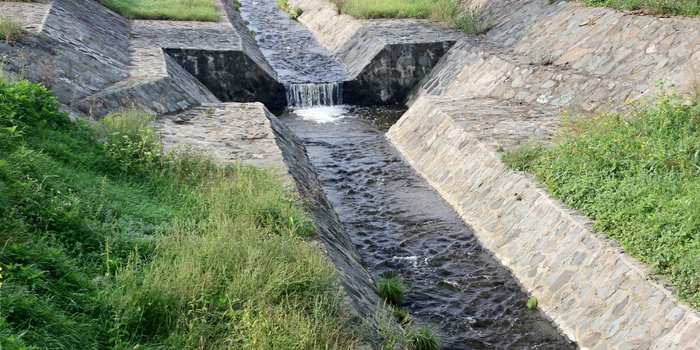
- Surface Slope Drains
In this type of slope, the water from the slopes is directed to the open drains, which are positioned at the bottom of the slopes. These open drains carry water to the stormwater drains or culverts.
- Culverts and Pipe Systems
Culverts are installed beneath the slopes to drain the excessive water underneath the road surface. Perforated pipes are also used to absorb the water in the subgrade layer and finally drain into the mainstream system.
- French Drains
In this system, trenches are installed beneath the slope’s foundation to intercept the water and carry this water towards the mainstream. The trench should be filled with gravel or perforated pipes and it protects the subsurface.
- Slope Stabilization Techniques
The latest techniques, like soil nailing and geo-textiles, are applied for steeper slopes. You can adopt this system along with drainage pipes to handle the water effectively and drain it successfully.
4. Cross Drainage System
A cross-drainage system is designed to manage the water flow like a river, canal or stormwater that intersects the road pathway. If a road crosses a natural water flow, a drainage system should be in place to manage the water flow. Different types of cross-drainage systems are installed to handle the water.
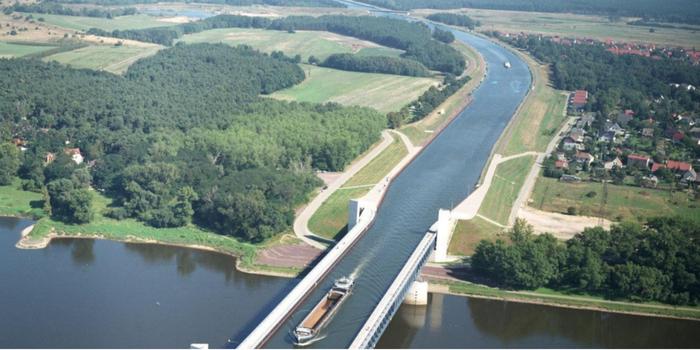
- Culverts
Culverts are the pathways that are built beneath the road surface, through which water can pass without any disturbance. They are like a tunnel-like structure and can be made with concrete, plastic or any other solid material. Culverts can be of two types: pipe culverts and box culverts.
- Bridges
Bridges are constructed where the water flow is greater and the road needs to be built. They allow an unobstructed flow of water.
- Ford Crossing
Usually built on the water where the levels are shallow and easy crossing is possible. Vehicles can easily pass the patch because of the low water level.
- Stormwater Drains
As the name indicates, these drains are built to handle water in rainy weather or in flooded conditions. These drains are used to handle the excessive water and prevent road damage.
5. Downspout and Gutter Systems
It’s an effective way to handle the rainwater and drain it from the roofs to the drain systems. The gutters are installed at the edges of the roof to collect the rainwater and direct it towards the downspout.
The downspout connects with the lower gutter system and channels the water towards the main drain system. It protects your roof from any damage or erosion caused by the accumulation of excessive water.

6. Side Drainage
The term” side drainage” usually refers to the drainage system alongside the road. It can be of various types, such as open drains, trenches, side culverts, gutters and slotted drains, that can remove the water from the road surface and prevent the road from erosion.

Requirements of Highway Drainage System
Adjoining Land
Adjoining land is very important in designing the drainage system of the highways. You must consider the type of adjoining land whether it is a hilly area, farming land or a river that runs parallel. According to the adjoining area, you can select the drainage system for the road that can increase the shelf life of the highways.
Camber
It is a technical term that means the natural angle of the road that can prevent water accumulation in the centre of the road and direct the excessive water to the side edges. You should consider a camber range between 2%-4%. The maximum range is adopted in heavy rainfall areas.
Cross-Drainage Works
Cross drainage is also an important factor in keeping the road in its original shape. The water should neither accumulate on the road surface nor absorb beneath the surface.
You must install a proper drainage system, including culverts, bridges and a ford crossing to handle the water flow that intersects the road.
Gradient
It is a longitudinal slope that assists water in reaching the drainage points easily. Normally, a 0.5%-1% gradient is normal in roads. The steeper gradient can lead to erosion; thus, you must remain within the limits.
Highest Flood Level
You must consider the highest water levels in the flood-prone areas. The road levels should be higher than 600 mm to 1 meter above the maximum level of flooded water, so the water can not touch the road surface.
Intercepting Drains
This drainage system is also installed to intercept the water before it comes to the road surface and channelize it through a proper drainage system. You must consider all the factors to assess the proper needs of this system. They are usually positioned on the road edges and around embankments.
Side Drains
The side drains can be open ditches or closed drains, depending on the need and the expected water flow. Open side drains are common in hilly areas to collect excessive rainwater and drain it into the mainstream.
Materials Used in Road Drainage
- Concrete Pipes
Concrete pipes are commonly used in road drainage systems. They can withstand heavy water pressures and are generally installed as a subsurface drainage system to remove water from the subgrade layer. These pipes are also used as culverts to pass the water beneath the roads.
- Corrugated Steel Pipes
These pipes are lightweight compared to the concrete pipes and are easy to install. Normally, these corrugated steel pipes are installed as culverts and stormwater drains. You can select these pipes for providing strength with flexibility.
- PVC Pipes
It is a blessing of modern technology. PVC pipes provide solutions for multiple drainage systems, including subsurface drainage systems, culverts and sewerage lines. The pipes are easy to install and can withstand heavy pressures.
- Stone and Gravel
Stone and gravel are both widely used materials in road drainage systems. Gravel is used around pipes to filter the water and prevent clogging. On the other hand, crushed stones are used to control the water flow. Gravel is used in French drains, trenches and subsurface pipes.
Importance of Road Drainage
Prevents Water Accumulation
A proper road drainage system is installed to prevent any excessive water on the road surface in case of heavy rain or any accidental condition, like a flood. The road drainage system helps to remove water and clear the road in a quick time.
Stops Road Foundation Damage
The subsurface road drainage is specifically designed to prevent any damage to the foundation of the road. It prevents the water seepage in the soil and thus protects the foundation.
Increase in Road Strength
Water causes erosion and damage to the road surface, so a good drainage system can enhance the lifespan of the road. A good drainage system guarantees a more durable road.
More Safety
A road with a properly installed drainage system is safer for the users. The drainage system quickly removes the water and makes the road safe and usable in any emergency condition.
Conclusion
So, road drainage is the foundation of safe and sustainable highway infrastructure. You should wisely analyse your site soil condition, traffic load and climate. Then, you can make better decisions about which type of drainage system you should adopt. You can also talk to our experts for your further inquiries and get professional guidance.


-80x69.png)

